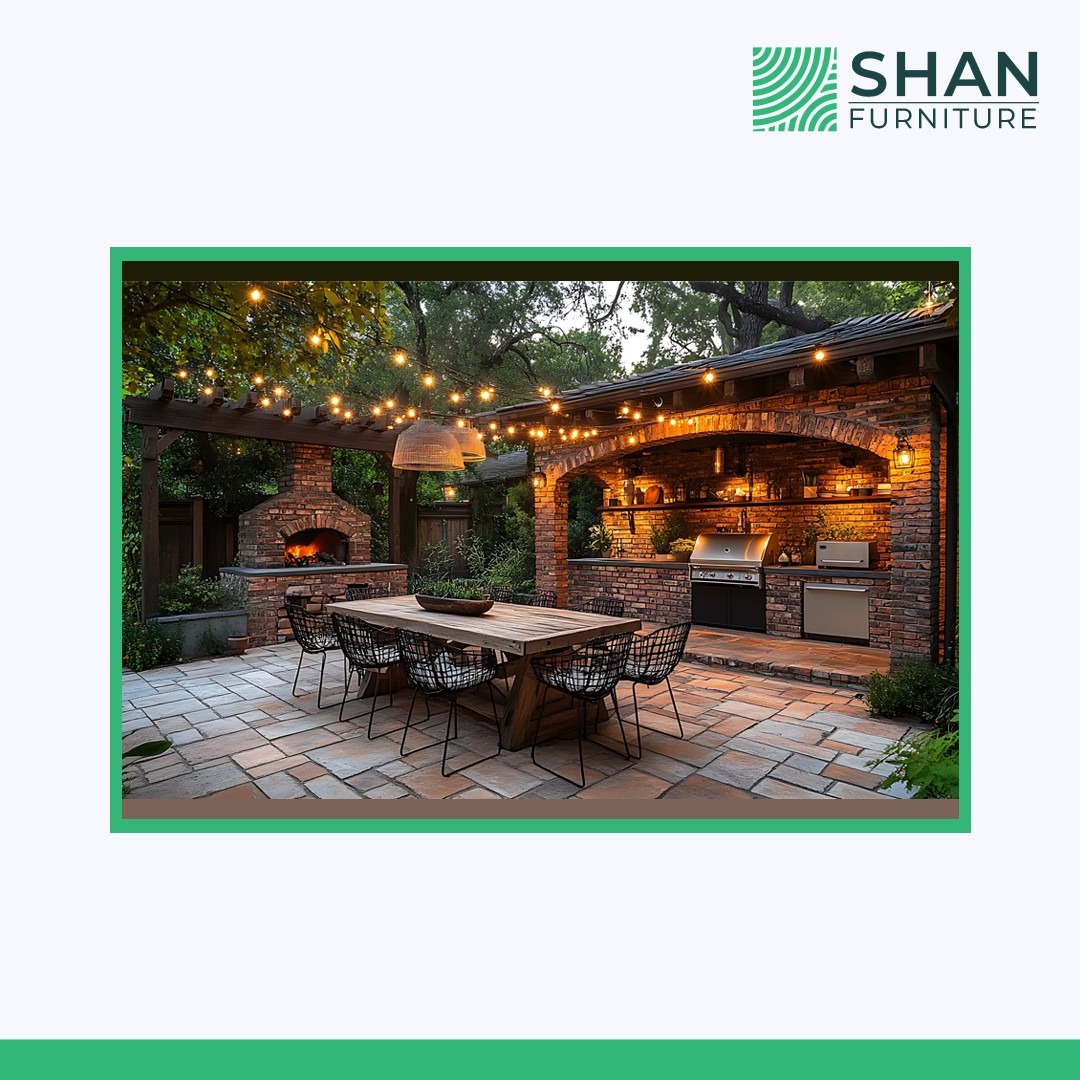A well-organized kitchen is the heart of a functional home. Whether you’re an avid home cook or someone who only prepares meals occasionally, the way your kitchen furniture is arranged can significantly impact your experience. From cooking to cleaning, a thoughtfully laid-out kitchen boosts efficiency, enhances comfort, and adds aesthetic value. In most households, the kitchen isn’t just a place to cook—it’s also a space for gathering, socializing, and unwinding. That’s why it’s important to approach kitchen furniture organization with a clear plan and purpose.
Organizing your kitchen furniture effectively doesn’t always require a full remodel or expensive upgrades. With the right techniques and attention to detail, you can transform even the most cluttered spaces into a streamlined and inviting environment. Every corner counts when it comes to maximizing storage, ensuring accessibility, and creating an efficient workflow.
Understand the Flow of Your Kitchen
Before diving into furniture placement or storage solutions, it’s important to observe how you use your kitchen. Think about your daily habits—where do you usually chop vegetables, where are your spices kept, and how far do you walk to reach the refrigerator? The best organization strategies revolve around your workflow, often referred to as the kitchen work triangle: the stove, sink, and refrigerator. These three areas should form a natural path that reduces unnecessary movement.
Place your cabinets and kitchen island in a way that supports this triangle. Keep furniture from obstructing the flow, especially in smaller kitchens where every step matters. This simple consideration can drastically improve how your space feels and functions.
Prioritize Accessibility and Comfort
When organizing your kitchen furniture, make accessibility your priority. Frequently used items should always be within arm’s reach. For example, store utensils in drawers close to the stove, and place cutting boards and knives near your prep area. Avoid placing heavy or bulky appliances in high cabinets or tight corners. Instead, opt for lower shelves or pull-out drawers that provide both safety and convenience.
Consider the height of your furniture as well. Bar stools, counters, and tables should match in proportion to ensure a comfortable experience whether you’re dining or cooking. Adjustable-height options can be a smart investment for growing families or multi-generational households.
Use Vertical Space Wisely
In many kitchens, wall space goes underutilized. However, vertical organization can free up significant counter and cabinet room. Mount open shelves to store frequently used dishes, jars, or even decorative items. Hooks and magnetic strips can be added to hang pots, pans, or knives, creating easy access without cluttering surfaces.
This is particularly useful in compact homes, where efficient use of space is non-negotiable. When planning your kitchen design in Pakistan with prices in mind, vertical shelving offers a budget-friendly and visually appealing solution. Many local interior designers now incorporate modular open-shelf systems that blend practicality with style.
Select Multi-functional Furniture
One of the smartest moves in kitchen organization is choosing furniture that serves more than one purpose. For instance, a kitchen island with built-in storage can double as both a prep station and a dining table. Benches with hidden compartments or foldable chairs that can be tucked away when not in use are ideal for smaller kitchens.
Look for kitchen carts that can move around with ease, providing flexibility depending on your needs. These pieces not only save space but also make the entire layout more adaptable. Versatile furniture helps your kitchen evolve with your lifestyle instead of requiring constant updates.
Create Designated Zones
Zoning is a highly effective technique for organizing kitchen furniture. Divide your kitchen into distinct areas for cooking, prepping, cleaning, and storing. This eliminates confusion and ensures that each task has a designated space. For example, the cooking zone should include the stove, oven, and cookware, while the prep area should be stocked with knives, cutting boards, and mixing bowls.
This strategy helps reduce clutter and enhances workflow. It also aids other family members in understanding where things belong, fostering a more organized and cooperative kitchen environment. Zoning is especially useful in open-plan kitchens, where boundaries between areas can become blurred.
Optimize Cabinet and Drawer Storage
It’s easy for cabinets and drawers to become catch-alls if they aren’t managed properly. Use drawer dividers and shelf risers to keep items in order and maximize vertical storage. Lazy Susans are great for corner cabinets, and pull-out trays allow you to reach the back of deep drawers without straining.
Make sure to place the most frequently used items in the most accessible locations. Keep a sense of symmetry and balance in mind as you arrange your storage to maintain a clean visual flow. Avoid overloading shelves, which can lead to difficulty finding items and a sense of chaos in the space.
Make Room for Movement
Effective organization isn’t just about where things are placed, but also about how easily you can move around. Ensure there is enough clearance between pieces of furniture and walls or appliances. In high-traffic areas like between the sink and stove or refrigerator and countertop, you should be able to walk comfortably without bumping into obstacles.
This becomes even more critical in joint family homes or households with kids, where multiple people might use the kitchen simultaneously. A clutter-free pathway not only adds to comfort but also improves safety, especially when handling hot items or sharp tools.
Keep Aesthetic Harmony in Mind
While function is key, your kitchen’s visual appeal shouldn’t be overlooked. Choose furniture that complements the color scheme and material palette of your kitchen. Mismatched finishes and styles can create visual clutter even if the space is organized.
Try to stick to one theme—whether it’s rustic, contemporary, or minimalist. This consistency ties everything together and makes the kitchen feel more cohesive. Even in budget-conscious renovations, thoughtful design choices can create a luxurious and polished effect.
Maintain Regular Decluttering Habits
No matter how well you organize your kitchen initially, without regular maintenance, things will eventually fall out of place. Make it a habit to go through your cabinets and drawers every few months. Donate or discard items you no longer use and reorganize anything that’s become messy.
Consistent tidying ensures that your kitchen remains functional and pleasant over time. It also gives you the opportunity to update the layout based on changing needs or preferences, keeping the space fresh and efficient.
Invest According to Your Needs
Organizing your kitchen furniture effectively doesn’t mean spending excessively. What matters is investing in items that genuinely improve your daily experience. Custom cabinetry, ergonomic furniture, and space-saving innovations can be worth the cost if they bring long-term value. When evaluating furniture options, always consider quality, durability, and how well they fit into your specific kitchen design.
In the context of kitchen design in Pakistan with prices that vary widely depending on material and brand, careful research is essential. You’ll find a wide range of budget-friendly options that don’t compromise on functionality or aesthetics. From local handcrafted furniture to imported modular solutions, the key is to prioritize what enhances your workflow and space.
Final Thoughts
An organized kitchen doesn’t just look better—it works better. From thoughtful furniture placement to smart storage solutions, every detail contributes to a more functional and enjoyable cooking environment. By focusing on flow, accessibility, and personal habits, you can turn even the most chaotic kitchen into a calm and efficient space. Remember, good design is about making your space work for you, not the other way around.







0 Comments